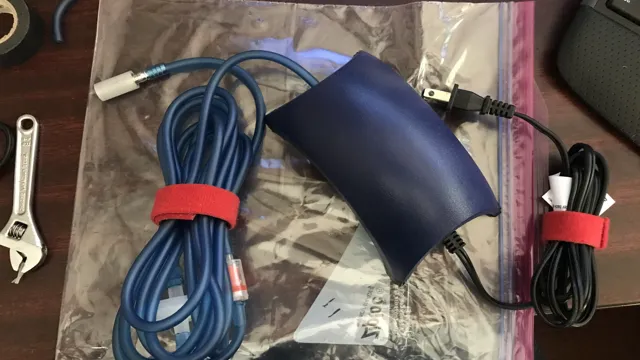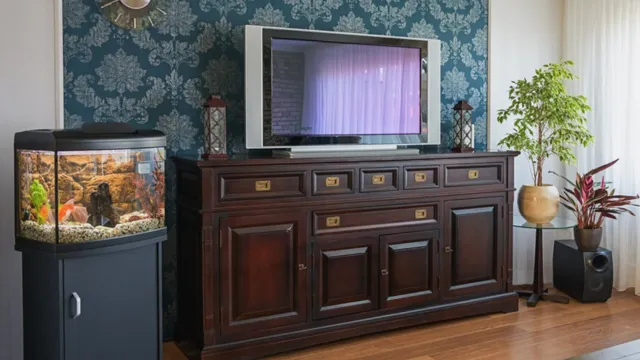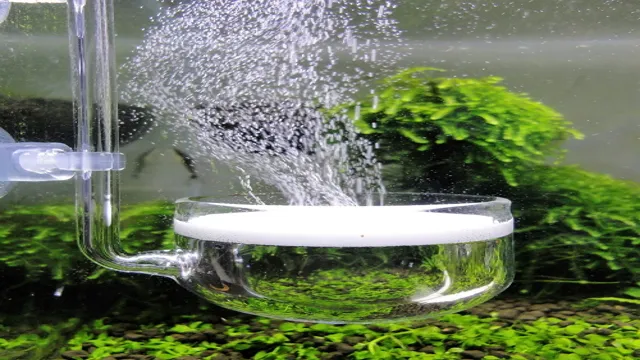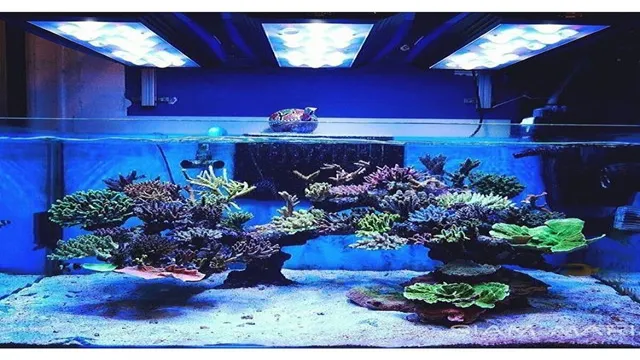If you’re a homebrewer looking to take your beer game to the next level, you know that aeration is key. Most brewers understand that aeration is essential in the brewing process as it helps the yeast build healthy cell walls, which results in higher attenuation rates and better flavor profiles. And, if you want to aerate your beer quickly and efficiently, a quality aquarium pump can be your best ally.
However, not all aquarium pumps are created equal, and choosing the right one can make all the difference in the world. Aquarium pumps are designed for many purposes, like moving water and creating bubbles. When it comes to beer aeration, the pump’s function is to inject air into the wort or beer, which sparks the oxygenation process.
There are plenty of factors to consider when selecting an aquarium pump for beer aeration, such as power, size, noise, durability, and price. Additionally, some pumps perform better than others, depending on the type of beer you want to brew. For example, certain pumps may be better suited for ale, while others are ideal for lagers or stouts.
In this blog, we’ll go over some essential things you should keep in mind when selecting an aquarium pump for beer aeration. We’ll lay out the crucial factors you should consider, as well as some tips to keep in mind when making your choice. Whether you’re a beginner homebrewer or a seasoned vet, this blog will help you make an informed decision and choose the right aquarium pump for your beer aeration needs.
Understanding Your Beer Aeration Needs
When it comes to beer aeration, the strength of the aquarium pump you need will depend on the size of your batch and the desired level of dissolved oxygen. Generally, a pump with a flow rate of 5-10 gallons per hour is suitable for homebrewers making small batches of beer. However, if you’re brewing a larger batch or looking to increase the efficiency of your fermentation process, you’ll need a stronger pump with a flow rate of 20 gallons per hour or more.
It’s important to note that while a strong pump may seem like a good idea, too much aeration can actually harm the flavor and aroma of your beer. Always test and adjust as necessary to achieve the desired level of oxygenation without overdoing it. Finding the right strength of aquarium pump for your beer aeration needs may take some trial and error, but with practice, you’ll be able to create consistently great-tasting beer every time.
Factors to Consider
When it comes to beer aeration, there are several factors to consider in order to achieve the best possible results. Firstly, it’s important to understand the specific needs of the type of beer you are working with. Some styles of beer benefit from more aeration than others, so it’s important to do your research before getting started.
Another important factor is the method of aeration you choose. There are several ways to introduce oxygen into your beer, including using an aeration stone or simply shaking the fermenter. Each method has its own benefits and drawbacks, so it’s important to weigh your options and choose the one that best fits your needs.
Finally, it’s crucial to make sure your aeration process is done safely and effectively. Without proper sanitation, you run the risk of contaminating your beer, while over-aerating can lead to off flavors and other issues. By taking the time to understand your beer’s unique aeration needs and selecting the right method for the job, you can achieve a perfect brew every time.

Benefits of Proper Aeration
Proper aeration of your beer is crucial to ensure that it tastes great and has a good head on top. This is particularly important if you are brewing at home, as mistakes in this area can ruin your entire batch. Aeration is the process of adding oxygen to your beer, which is needed by the yeast to grow and produce alcohol.
If you don’t aerate sufficiently, your beer will lack flavor and won’t be as carbonated. On the other hand, if you over-aerate, your beer can have a metallic or cardboard taste due to oxidation. It’s important to find the right balance, and this will depend on factors such as your equipment, the type of beer you are brewing, and the quantity you are making.
Investing in a good aeration system or following an aeration guide can help you achieve the perfect balance and ensure that your beer tastes great every time.
Types of Aquarium Pumps for Beer Aeration
When it comes to beer aeration, aquarium pumps are a popular choice for homebrewers. But the burning question on many minds is how strong of an aquarium pump is needed for beer aeration? The answer is dependent on the size of your beer batch and the duration of the aeration process. For smaller batches, a 2-4 watt pump may suffice, while larger batches may require a 10-15 watt pump.
Additionally, there are several types of aquarium pumps to consider. Diaphragm pumps are a good choice for beer aeration because they emit low pressure, which is gentler on the beer than high-pressure pumps. Air stones can also be used with most aquarium pumps to help disperse the bubbles more evenly and reduce the risk of foam formation. (See Also: How to Get Rid of Sand Cloudy in Aquarium: Tips and Tricks)
Overall, the right aquarium pump for your beer aeration needs requires a bit of research and consideration of your specific brewing setup.
Air Pumps
When it comes to keeping a healthy and vibrant aquarium, adequate aeration is crucial. This is why investing in a high-quality aquarium air pump is an excellent idea. There are several types of aquarium pumps available in the market, including diaphragm pumps, piston pumps, and linear pumps.
Diaphragm pumps are the most commonly used types of air pumps, and they are suitable for smaller aquariums. While they are affordable, they can be quite noisy compared to the other two types. Piston pumps are more powerful and can handle larger aquariums, but they are more expensive than diaphragm pumps.
On the other hand, linear pumps are the most expensive and the most efficient types, often used for larger aquariums or aquaponic systems. They are also known for their low noise levels and energy efficiency. Regardless of which type you choose, investing in an air pump for your aquarium is essential to maintaining a healthy environment for your aquatic pets.
Water Pumps
Water pumps are essential for maintaining a healthy aquarium and keeping the water well-aerated. When it comes to beer aeration, there are different types of aquarium pumps that you can use. One of the most popular types is the air pump, which works by creating bubbles in the water.
This process helps to increase the surface area of the water, allowing oxygen to dissolve more easily, and making it easier for your beer to ferment properly. Another type of aquarium pump you can use is the powerhead pump, which is more powerful than an air pump. Powerhead pumps work by creating strong currents in the water, which helps with the circulation and aeration of the beer.
The downside to using a powerhead pump is that it can cause a lot of turbulence which may be inappropriate for delicate beer that are not yet fully fermented. To optimize your beer aeration, it is not uncommon to use both air and powerhead pumps together. The combined effort of both pumps will create better and more evenly distributed water circulation, ensuring optimum beer aeration.
Recirculating Pumps
Recirculating pumps are a popular choice for aquarium owners looking for an efficient way to aerate their beer. These pumps come in different types and sizes, each designed for specific purposes. Firstly, powerheads are great for small aquariums and provide a strong, direct flow of water.
They are also used for creating currents inside the aquarium. Secondly, submersible pumps are perfect for bigger aquariums and provide a continuous flow of water. They are also used for filtering water, which provides a healthy environment for your beer.
Finally, air pumps are an affordable option and are best suited for small aquariums with a low volume of beer. They work by pushing air into the water, which in turn creates bubbles that help to aerate your beer. Choosing the right pump for your aquarium depends on the size of your aquarium and brewing needs.
It’s important to understand the different types and their functions to ensure that you make the right decision.
Determining the Strength of Your Aquarium Pump
When it comes to beer aeration, your aquarium pump can be a great tool to use. But how do you determine how strong of an aquarium pump you need for this task? First off, it’s important to consider the size of your brewing vessel and the amount of wort you’ll be aerating. A smaller vessel with a lower volume of wort will require less pump power than a larger vessel with a higher volume.
Additionally, the type of pump you use will also play a role in determining strength. Air pumps have different flow rates and can produce different amounts of pressure. It’s important to select a pump with a flow rate and pressure that is appropriate for your specific needs. (See Also: How to Protect an Aquarium from an Overflow: Tips and Tricks)
By considering these factors, you can choose the right aquarium pump strength for your beer aeration needs and ensure a successful brew.
Calculating Pump Strength Requirements
When it comes to keeping your aquarium healthy and vibrant, choosing the right pump is essential. Determining the strength of your aquarium pump requires consideration of several factors, including the size of your tank, the types and number of fish, and the density of plants and decorations. One easy way to calculate the strength of your pump is to measure the volume of your aquarium and select a pump with a flow rate equal to at least four times this volume per hour.
For example, for a 50-gallon tank, you would want a pump with a flow rate of at least 200 gallons per hour. However, keep in mind that this calculation is just a starting point and may need to be adjusted based on your specific needs. Ultimately, choosing the right pump for your aquarium requires some research and careful consideration.
The right pump will help keep your aquarium clean and healthy, ensuring your fish have a happy and thriving environment to call home.
Matching Pump Strength to Aeration Needs
When it comes to setting up an aquarium, determining the strength of your aquarium pump is key to providing your aquatic creatures with the proper aeration they need to thrive. The strength of a pump is usually measured in gallons per hour (GPH), which refers to how much water the pump can push through in an hour. The appropriate GPH for your tank depends on its size, the number of fish, and the types of plants and other aquatic life you have.
If the pump is too weak, your fish may not receive enough oxygen, while using a pump that is too strong can create an excessive amount of water movement that may stress out your fish. To determine the right strength of your aquarium pump, consider using a pump calculator or consult an expert. Remember, the health of your aquatic life depends on the proper aeration and water movement in your tank, so take your time to choose the right pump for your specific needs.
Other Considerations
If you’re wondering just how strong an aquarium pump you need for beer aeration, there are a few things to consider. Firstly, you need to think about the size of your tank. A larger tank, obviously, will require a more powerful pump to ensure adequate aeration.
Secondly, think about the type of beer you’re brewing. If you’re making a lighter beer, you won’t need as much aeration as you would for a heavier beer. Lastly, consider how much time you have.
A more powerful pump will require less time to properly aerate your beer, while a weaker pump will need more time to do the same job. Ultimately, the amount of aeration needed will come down to personal preference and the goals you have for your beer’s flavor. As for the main keyword, it’s important to choose a pump that is strong enough for your specific needs, so make sure to do your research and choose wisely.
Noise Level and Power Consumption
When it comes to buying a new electronic gadget, noise level and power consumption are important considerations to keep in mind. For instance, if you’re planning on using the device in a quiet environment, you would want to ensure that it has low noise levels so as not to distract yourself or others around you. You would also want to ensure it’s energy-efficient, as high power consumption would mean it could end up being more expensive to operate in the long run.
It’s important to research the product’s specifications and customer reviews before making a purchase to get a better understanding of how it performs in terms of noise and power consumption. Additionally, keep in mind that sometimes it may be worth spending a little extra on a more energy-efficient device to save money and help the environment in the long term.
Brand and Quality
When considering a brand’s quality, there are other factors to keep in mind besides the product itself. One important consideration is the company’s reputation and values. Does the brand prioritize ethics and sustainability in their manufacturing process? Are they transparent about their practices and willing to make changes for the better? These factors can be just as important as the physical quality of the product itself. (See Also: How to Make a DIY 75 Gallon Aquarium Stand: Step-by-Step Guide)
Additionally, it’s important to consider the brand’s target audience. Is the product geared towards a specific demographic or lifestyle? Understanding this can help you determine if the brand’s values align with your own and if their product is truly worth investing in. Overall, brand and quality go hand in hand, and considering all aspects of a brand before making a purchase will ensure a positive and satisfying experience.
Conclusion
In conclusion, choosing a strong aquarium pump for beer aeration is crucial for achieving the optimal level of oxygenation in your brew. A powerful pump ensures a vigorous bubbling action that properly disperses oxygen throughout the liquid, resulting in a more efficient fermentation process and ultimately, a better beer. Remember, aeration is one of the most important steps in home brewing, so don’t skimp on the pump and let your beer suffer the consequences.
With a strong pump on your side, you’ll be brewing up some seriously bubbly and delicious beverages in no time!”
FAQs
Why do I need an aquarium pump for beer aeration?
An aquarium pump is commonly used for beer aeration because it is an affordable and efficient solution for introducing oxygen to the wort or beer during the brewing process.
What is the optimal strength or power for an aquarium pump used for beer aeration?
The optimal strength or power of an aquarium pump used for beer aeration depends on various factors, such as the volume of your brew and how often you need to aerate it. Generally, a 5-15 gallon aquarium pump is sufficient for most homebrewers.
Can I use any type of aquarium pump for beer aeration?
Not all aquarium pumps are suitable for beer aeration. Look for ones that are designed for continuous operation, have a low noise level, and come with a diffuser or airstone.
How long should I run the aquarium pump during beer aeration?
The duration of aeration depends on the type of beer you are brewing. Typically, 30 minutes to 1 hour of constant aeration is enough for most beer styles.
Should I sanitize my aquarium pump before using it for beer aeration?
Yes, it is important to sanitize your aquarium pump before using it for beer aeration to avoid contamination. Use a sanitizing solution like Star San and follow the manufacturer’s instructions.
Can I use an aquarium pump to oxygenate my wort before fermentation?
Yes, using an aquarium pump to oxygenate your wort before fermentation can help to promote yeast health and lead to better attenuation.
Is there a way to increase the oxygenation efficiency of my aquarium pump during beer aeration?
Yes, you can use a diffusion stone or airstone, which provide a finer and more dispersed bubble pattern that maximizes oxygenation efficiency.






